For the 2024 Paris Olympics, Pichet Group and Legendre Immobilier have collaborated on creating sustainable buildings with a low carbon footprint in L’Île-Saint-Denis, an eco-district located north of Paris city center along the Seine River.
Thorough anticipation of needs and a secure supply of Kerto LVL by the ISB Group, together with Metsä Wood’s industrial production capacity, made this project possible, combining performance, low carbon and project efficiency.
These buildings will initially serve as accommodations for Olympic athletes during the games and later be repurposed into residential apartments.
Innovative and efficient construction process
The Athletes’ Village is a showcase of sustainable hybrid construction, with 45 % of the buildings using wood as the main material. The structural design of the wood-based buildings from the initial sketches to the final delivery was done by a timber construction expert Gustave. “These kinds of wooden structures have many technical and regulatory challenges, and they need to be carefully integrated. We had to manage several aspects including the details of building tall structures from wood, using pre-fabricated elements, creating flexible apartment layouts, and ensuring fire safety. We also had to consider sound insulation and maintaining the thermal performance. All of this had to be done according to France’s intricate set of rules and regulations”, says Luc Boyer, partner of Gustave. Despite these constraints, the construction process was designed to be fast and efficient. “We chose the best construction methods to achieve this exceptional project in record time” says Thomas Charmasson, President of Gipen-Roux.
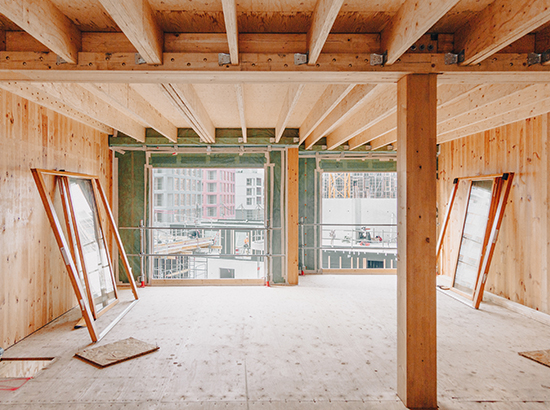
Multipurpose buildings – from single rooms to residential apartments
The first stage, known as the “Empreinte” phase, aims to make Île-Saint-Denis as standout location for the 2024 Olympic Games. It will accommodate up to 2,700 athletes and officials. The area will also provide various facilities like offices, storage spaces, and meeting rooms, all designed to meet the needs of the Olympic event.
Following the conclusion of the games in 2025, the “Heritage” phase will commence, transforming the area into a lively city district with residential apartments, businesses, shops, and public amenities.
Focusing on environmental excellence, particularly in wood construction
The project in Île-Saint-Denis is working towards the sustainability goals set by the City of Paris and Solideo (Société de Livraison des Ouvrages Olympiques – The Olympic Delivery Authority). The goal is to help reach the climate plan’s target of no net carbon emissions by 2050 through effective carbon management. This shared commitment involves using eco-friendly materials like wood and taking steps to prepare the city for the sustainability goals set for 2050. These steps include improving city infrastructure with sustainable land use, adding more green spaces, and incorporating water features in public areas.
Wooden elements make construction fast and sustainable
To fulfil all the requirements of this large-scale construction project, one remarkable solution was to use prefabricated wooden elements. Offsite-manufactured elements have several advantages over traditional on-site construction; prefabricated elements help to optimize and minimize the logistics and delivery of materials to the construction site, while also reducing carbon emissions from transport. As the element installation is fast, the nuisance of a construction site can therefore be minimized. Quick element installation also speeds up the overall construction process, reducing the risk of bad weather during the construction phase.
Efficient element manufacturing with Kerto-Ripa technology
Metsä Wood’s Kerto-Ripa technology is a timber construction system that uses Kerto® LVL (laminated veneer lumber) products to create prefabricated load-bearing floor and roof elements. Kerto Ripa elements consist of Kerto S-beams and Kerto Q-panels to form hollow box-shaped or T-shaped structures. These elements can be insulated, fire-protected, and finished according to the client’s specifications. Kerto Ripa technology offers several structural advantages for the contractor, such as high strength, lightness, fast installation, reduced material consumption, long spans and design flexibility.
Kerto LVL products are particularly suitable for prefabricated elements because they are lightweight, strong and large panel sizes (width up to 2,4 m and length up to 20 m) can carry heavy loads. Available in a variety of thicknesses, widths and lengths, it is possible to choose the correct product size for every application to optimize material usage. The structure and properties of Kerto LVL make it extremely material-efficient and it is needed less in volume compared to other wood materials. In fact, this project was initially planned to be carried out using CLT, but the material was changed to LVL because of its excellent and unique properties.
Also, Gustave design office strived to design rational wood systems, without ever requiring Atex, despite the importance of the program. An asset for Kerto-Ripa, since covered by an ETA and a DTA.
Kerto-Ripa elements were selected for three different construction projects in Athletes’ Village. A total of 73 apartments and 3828 m2 of floor area were built with Kerto-Ripa box elements using only 268 m3 of Kerto LVL. This means that the average use of Kerto LVL was only 0.07 m3/m2, which underlines the material efficiency of Kerto LVL.
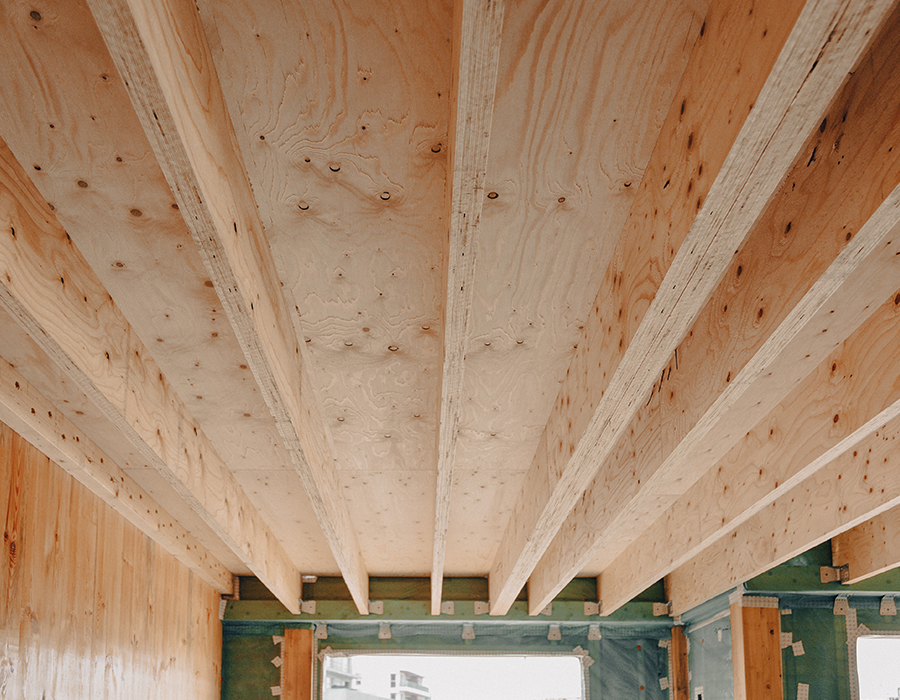
Successful cooperation from structural design to installation
Gustave design office carried out BIM modelling for this construction project to streamline the communication between the different stakeholders and, for example, to estimate the amount of needed volume of Kerto LVL. Guillet Production, the manufacturer of the Kerto–Ripa elements, could complete the assembly of all elements within the prescribed deadlines, without overstocking the material. Thus, the right quantities of materials per produced area were ordered and delivered. The success was achieved due to excellent coordination between various stakeholders, including the producer Guillet and the ISB Groupe, Kerto LVL’s French supplier. This was made possible by anticipating needs, ensuring the supply of Kerto LVL during a pandemic and wood shortage period, and leveraging the production capacity of Metsä Wood. As a result of good and efficient element design and prefabrication, Gipen-Roux was able to install the building elements in record time.
Benjamin Bodet, Managing Director of Groupe ISB, underscores the necessity for coordination among all stakeholders and highlights the significance of project-oriented service. “The strong connection between MetsaWood and Groupe ISB empowers us to offer smart solutions for significant French projects using Kerto LVL. To seamlessly incorporate this exceptional wood product into projects, a comprehensive approach to service is vital. ISB addresses aspects like supply control, storage capacity, logistical expertise, and personalized machining—all geared towards easing wood systems construction and fostering the rapid development of Kerto LVL in France.”
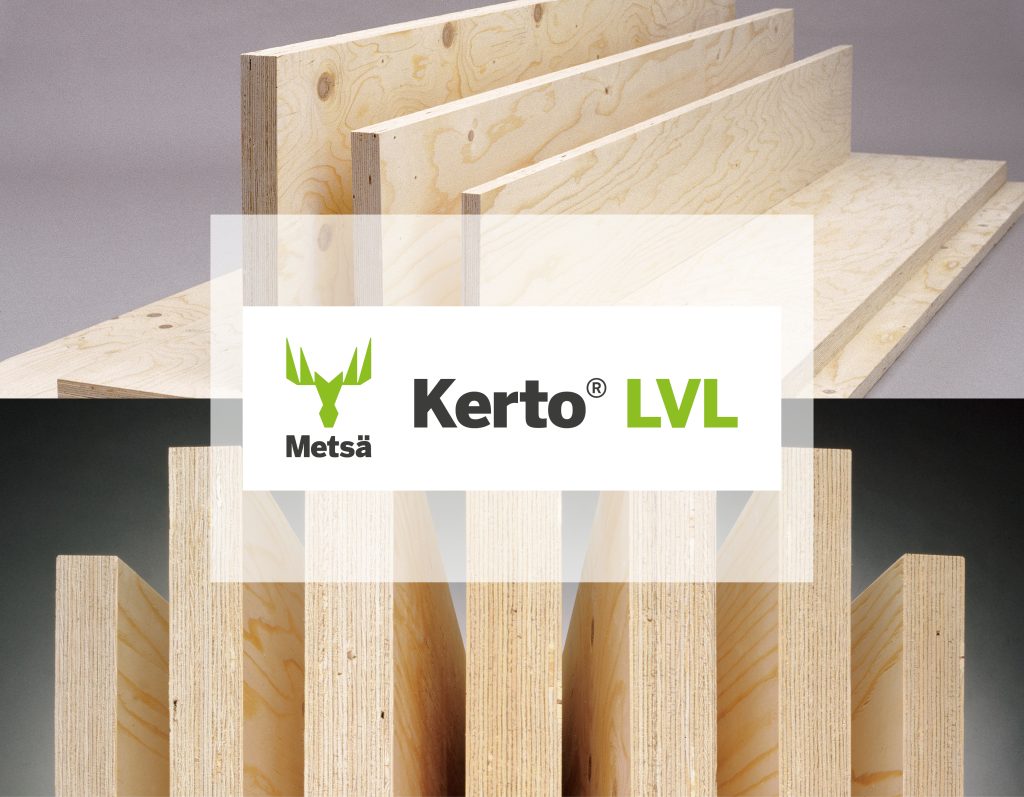
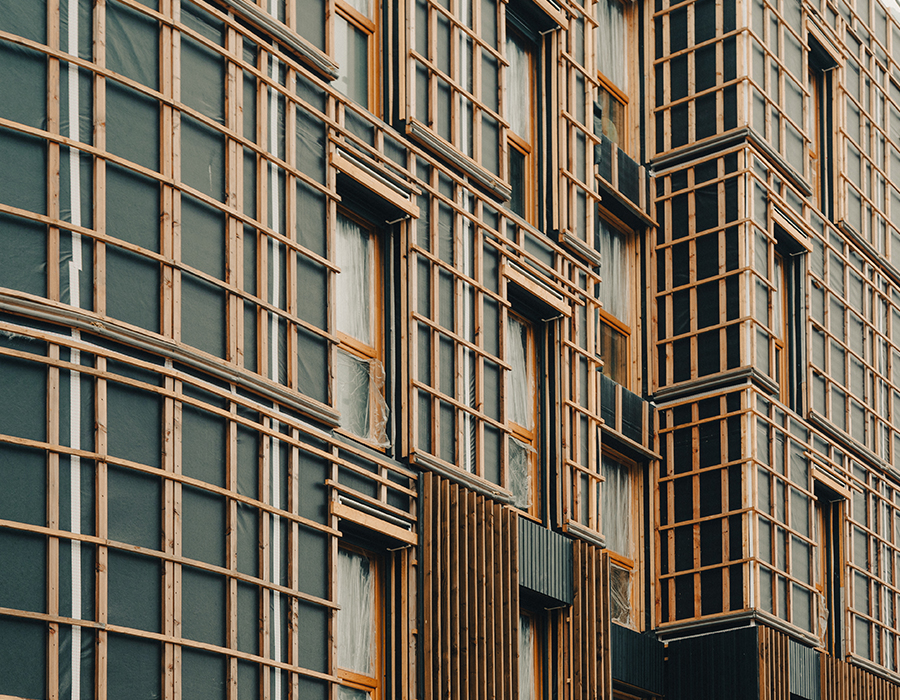
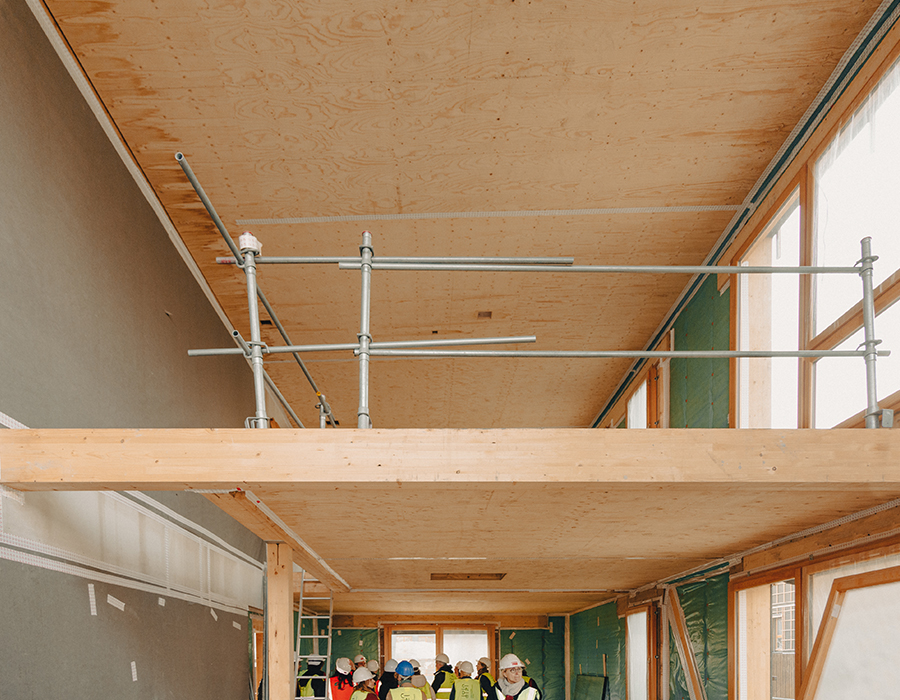
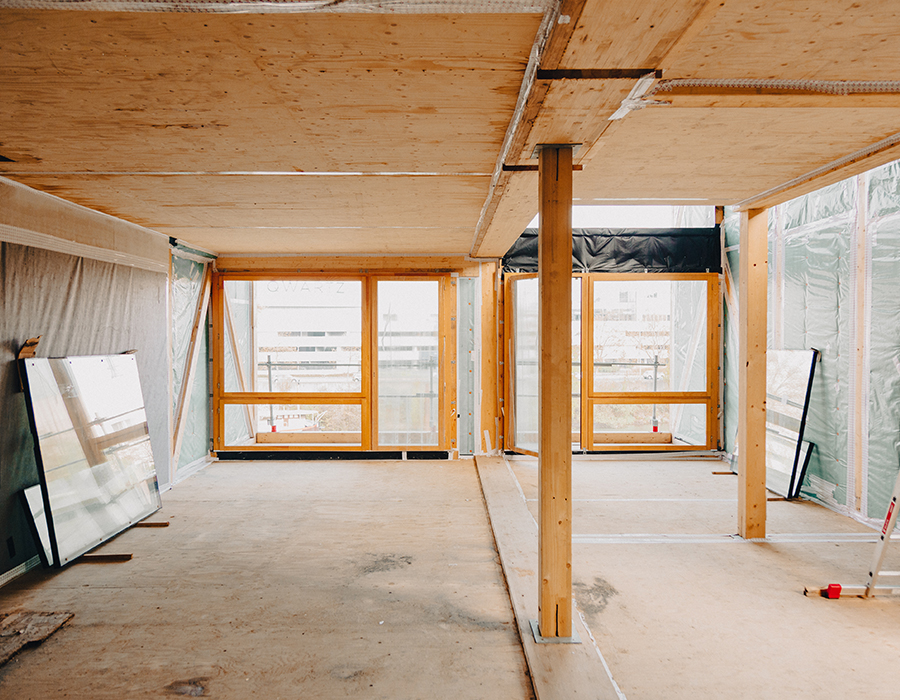
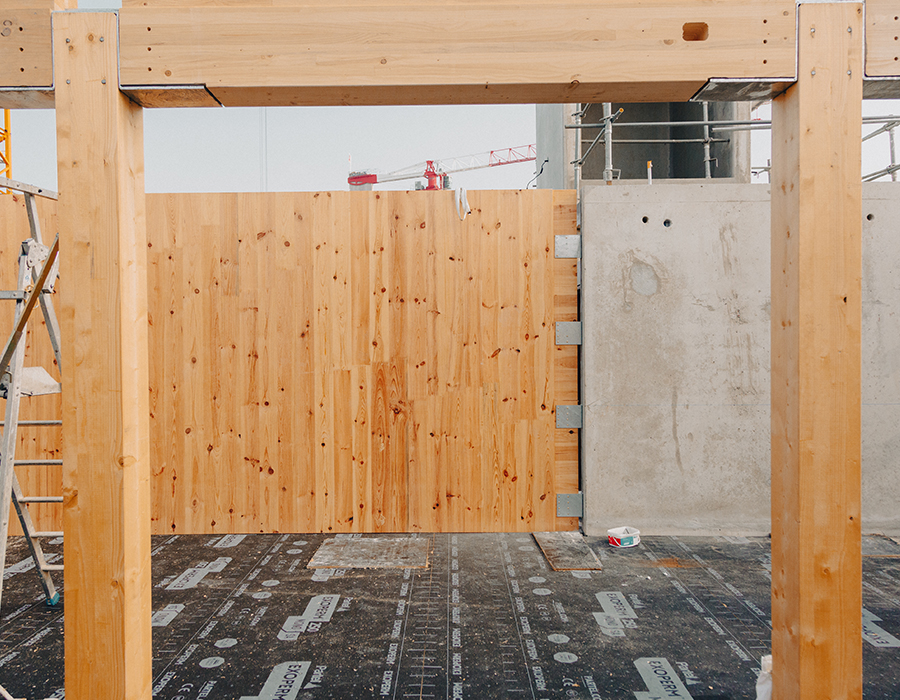
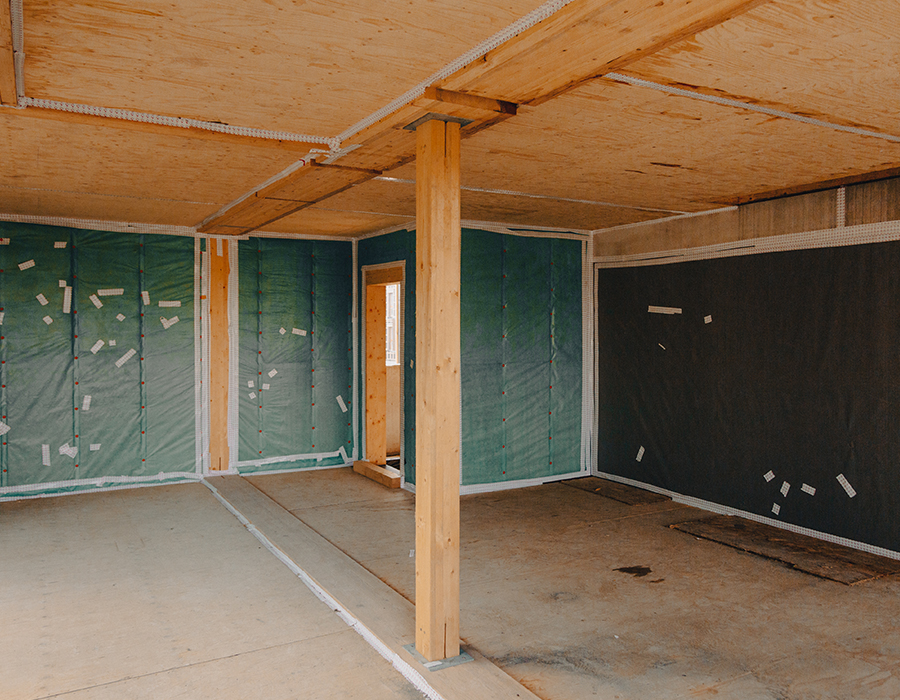
Certifications and labels:
Biodivercity label for lot PB8
Level E3/C1: PB8 and PB9 lots
Level E3/C2 for PB8
BEE+ label for the project’s housing units
Photography
©Alexandre Wallon
Team:
Client: Pichet Group / Legendre immoblier / Solideo
Building year: 2024
Architectural design: PPX, Fabrice Commerçon and Ibrahima N’Doye
Structural design: Gustave
Constructor: Guillet Production / Gipen-Roux
Kerto LVL producer: Metsä Wood
Wood component supplier: ISB Group